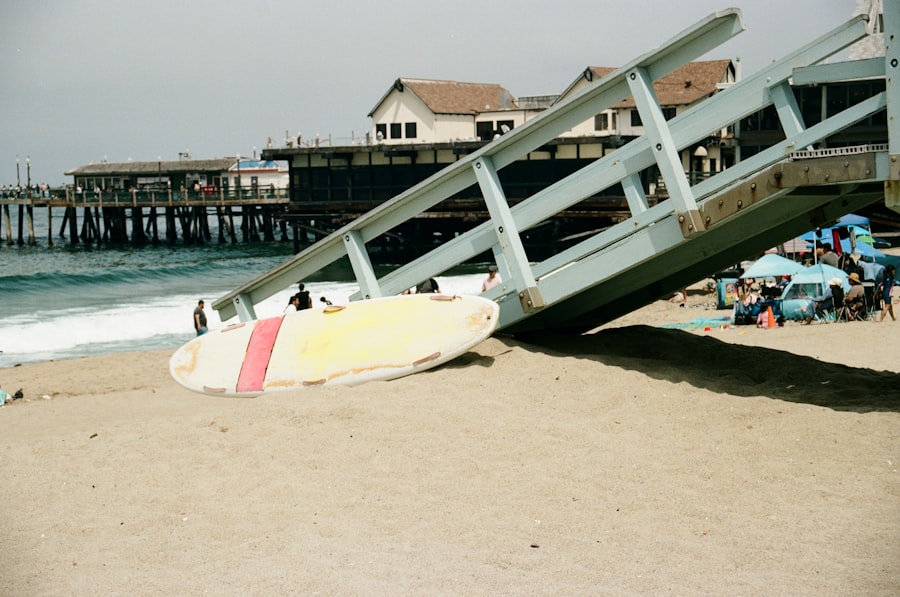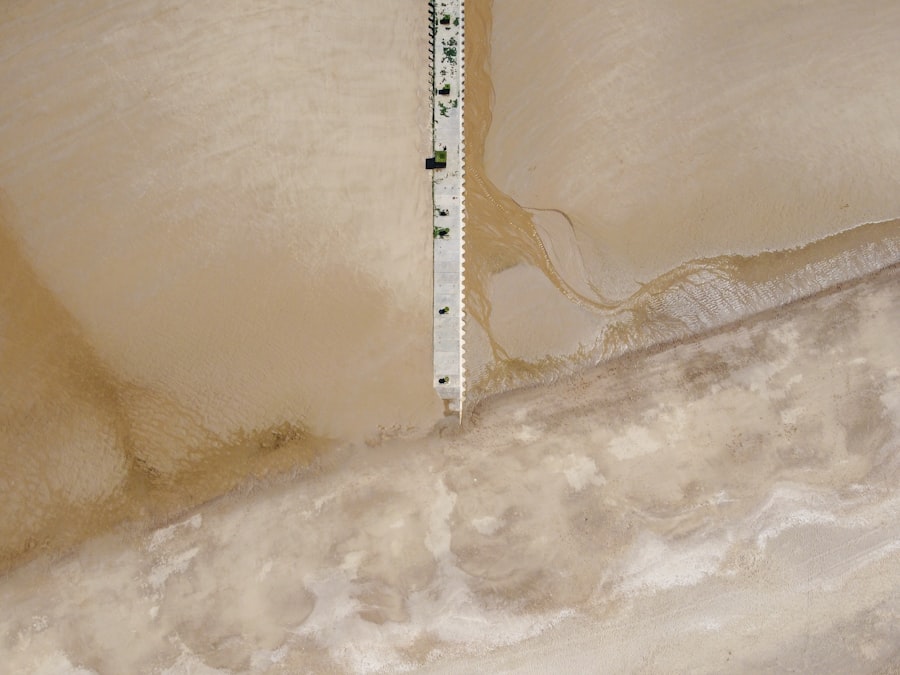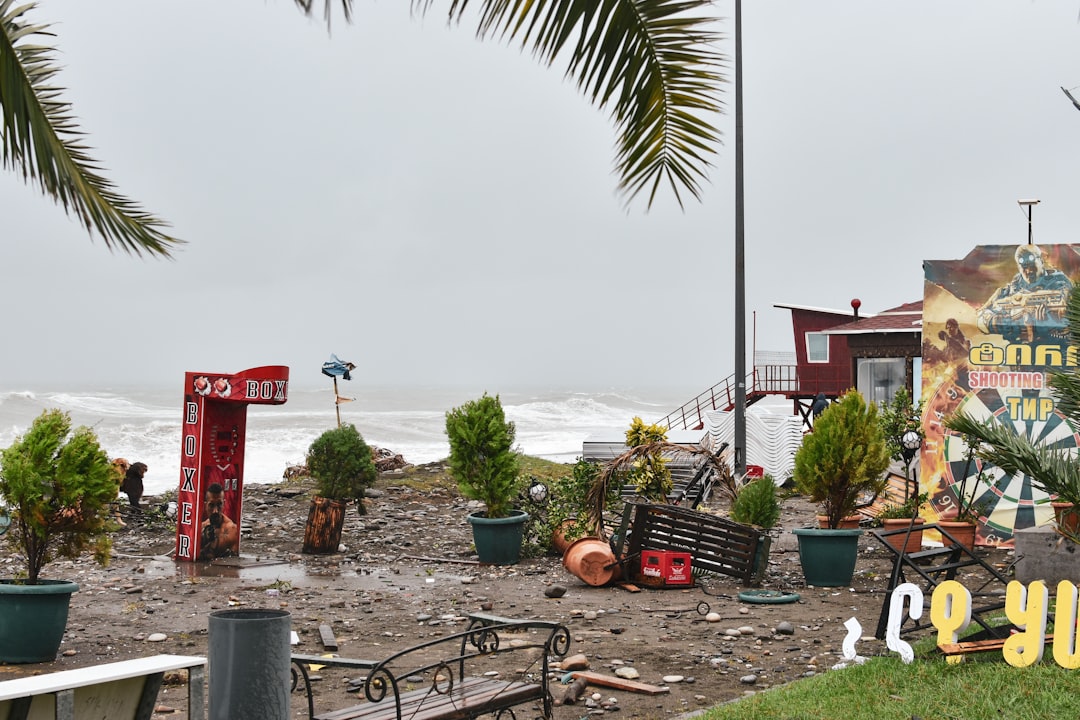Hurricane Sandy, which struck in late October 2012, left an indelible mark on New York City, a metropolis known for its resilience and vibrancy. The storm, often referred to as “Superstorm Sandy,” was a powerful reminder of nature’s fury, as it brought unprecedented flooding, wind damage, and widespread power outages. The storm’s impact was felt across all five boroughs, with coastal neighborhoods like Staten Island and parts of Brooklyn suffering the most severe consequences.
Sandy’s arrival coincided with a high tide, exacerbating the flooding and leading to scenes of chaos as streets transformed into rivers and homes were inundated. The aftermath of Hurricane Sandy revealed the vulnerabilities of urban infrastructure in the face of extreme weather events. Thousands of residents were displaced, and many businesses faced significant disruptions.
The storm not only caused immediate physical destruction but also instigated a long-term reevaluation of how cities like New York prepare for and respond to natural disasters. The emotional and psychological toll on the city’s residents was profound, as they grappled with the loss of homes, possessions, and in some cases, loved ones. Sandy served as a wake-up call, highlighting the urgent need for comprehensive disaster preparedness and response strategies.
Key Takeaways
- Hurricane Sandy had a significant impact on New York City, causing widespread damage and disruption.
- The storm caused extensive physical damage to infrastructure, including transportation systems and buildings.
- The economic consequences of Hurricane Sandy were severe, with billions of dollars in losses for businesses and individuals.
- The human toll of the storm was devastating, with loss of life and numerous injuries reported.
- The environmental impact of Hurricane Sandy was significant, with damage to coastal areas and ecosystems.
Assessing the Physical Damage to Infrastructure
The physical damage inflicted by Hurricane Sandy on New York City’s infrastructure was staggering. The storm surge overwhelmed the city’s coastal defenses, leading to extensive flooding in low-lying areas. Critical infrastructure such as subways, tunnels, and bridges suffered significant damage, with many subway stations submerged under several feet of water.
The Metropolitan Transportation Authority (MTA) reported that the storm caused approximately $5 billion in damages to its systems alone. This disruption not only affected daily commuters but also had ripple effects on the economy as businesses struggled to operate without reliable transportation. In addition to transportation infrastructure, Sandy wreaked havoc on residential buildings and commercial properties.
Thousands of homes were damaged or destroyed, particularly in neighborhoods like Breezy Point and the Rockaways. Many residents faced the daunting task of rebuilding their lives from scratch, navigating insurance claims and government assistance programs. The storm also highlighted the inadequacies of existing flood protection measures, prompting city officials to reconsider how to fortify vulnerable areas against future storms.
The physical scars left by Sandy served as a stark reminder of the need for resilient infrastructure capable of withstanding the increasing frequency and intensity of severe weather events.
Evaluating the Economic Consequences of the Storm

The economic consequences of Hurricane Sandy were profound and far-reaching. In the immediate aftermath, businesses across New York City faced closures due to flooding and power outages, leading to significant revenue losses. The tourism industry, a vital component of the city’s economy, also took a hit as visitors canceled trips or avoided affected areas.
Estimates suggest that the total economic impact of Sandy could exceed $70 billion when considering both direct damages and long-term economic disruptions. Small businesses, in particular, struggled to recover, with many never reopening their doors. In response to the economic fallout, various government programs were initiated to assist affected businesses and individuals.
Federal aid packages were approved to provide financial relief, while local organizations mobilized to offer support to those in need. However, the recovery process was uneven, with some neighborhoods bouncing back more quickly than others. The economic disparities highlighted by Sandy underscored the importance of equitable recovery efforts that address the needs of all communities.
As New York City moved forward from the storm’s devastation, it became clear that a comprehensive approach to economic resilience would be essential in preparing for future disasters.
The Human Toll: Examining the Loss of Life and Injuries
| Year | Number of Fatalities | Number of Injuries |
|---|---|---|
| 2018 | 36,560 | 2,710,000 |
| 2019 | 36,096 | 2,748,000 |
| 2020 | 42,060 | 2,710,000 |
The human toll of Hurricane Sandy was heartbreaking, with loss and suffering felt throughout New York City. The storm claimed at least 44 lives in the city alone, with many more injured as a result of flooding, falling debris, and other storm-related incidents. The tragedy extended beyond physical injuries; families were torn apart as loved ones were lost or displaced.
The emotional scars left by such a catastrophic event lingered long after the waters receded. In addition to immediate casualties, the psychological impact on survivors was significant. Many residents experienced post-traumatic stress disorder (PTSD), anxiety, and depression as they coped with the aftermath of the storm.
Support services were mobilized to help those affected process their grief and trauma, but access to mental health resources varied widely across neighborhoods. The human cost of Hurricane Sandy served as a poignant reminder that natural disasters do not just destroy buildings; they also disrupt lives and communities in profound ways.
Analyzing the Environmental Impact of the Storm
Hurricane Sandy’s environmental impact was multifaceted, affecting both natural ecosystems and urban landscapes. The storm’s heavy rainfall and flooding led to significant runoff, which carried pollutants into waterways and coastal areas. This contamination posed risks not only to marine life but also to public health as residents relied on these water sources for recreation and drinking water.
Coastal erosion was exacerbated by the storm surge, further threatening vulnerable ecosystems along New York’s shores. In addition to immediate environmental damage, Hurricane Sandy raised awareness about climate change and its role in increasing the severity of such storms. The flooding and destruction highlighted the need for sustainable practices that protect natural habitats while also safeguarding urban areas from future disasters.
As New York City began its recovery efforts, there was a growing recognition that environmental resilience must be integrated into urban planning and development strategies moving forward.
The Response Efforts: Assessing the Government and Community Response

The response efforts following Hurricane Sandy showcased both strengths and weaknesses in how New York City managed disaster recovery. Government agencies at local, state, and federal levels mobilized resources to provide immediate assistance to affected communities. Emergency services worked tirelessly to rescue stranded individuals and restore essential services like electricity and transportation.
However, challenges arose in coordinating these efforts effectively, leading to criticism regarding response times and resource allocation. Community organizations played a crucial role in filling gaps left by government agencies during the recovery process. Volunteers from across the city came together to provide food, shelter, and emotional support to those in need.
Grassroots initiatives emerged as residents banded together to help one another navigate the complexities of recovery. This spirit of solidarity highlighted the importance of community resilience in times of crisis and underscored the need for ongoing collaboration between government entities and local organizations in future disaster preparedness efforts.
Rebuilding and Recovery: A Look at the Long-Term Plans for NYC
In the wake of Hurricane Sandy, New York City embarked on an ambitious journey toward rebuilding and recovery that would reshape its landscape for years to come. City officials recognized that simply restoring what had been lost was insufficient; instead, they aimed to create a more resilient urban environment capable of withstanding future storms. This vision led to initiatives focused on enhancing infrastructure, improving flood protection measures, and investing in green spaces that could absorb excess water during heavy rainfall.
Long-term recovery plans included significant investments in coastal protection projects designed to safeguard vulnerable neighborhoods from future flooding events. These projects involved constructing barriers, restoring wetlands, and implementing innovative drainage systems that could mitigate stormwater runoff. Additionally, community engagement became a cornerstone of recovery efforts as residents were invited to participate in planning discussions about their neighborhoods’ futures.
By prioritizing resilience in rebuilding efforts, New York City aimed not only to recover from Sandy but also to emerge stronger in the face of climate change.
Lessons Learned: How Hurricane Sandy Has Shaped Future Disaster Preparedness
Hurricane Sandy served as a critical learning experience for New York City and other urban centers grappling with climate-related challenges. One key lesson was the importance of proactive disaster preparedness rather than reactive responses after a crisis occurs. In the years following Sandy, city officials implemented comprehensive emergency management plans that emphasized early warning systems, community education programs, and regular drills to ensure residents were equipped to respond effectively during emergencies.
Another significant takeaway was recognizing the interconnectedness of social vulnerability and disaster resilience. The storm exposed disparities in how different communities experienced its impacts; thus, future preparedness efforts have focused on addressing these inequities through targeted outreach and support for marginalized populations. By fostering inclusive planning processes that engage diverse voices within communities, New York City aims to build a more resilient society capable of weathering future storms together.
The Role of Climate Change in the Severity of Hurricane Sandy
The severity of Hurricane Sandy prompted widespread discussions about climate change and its implications for urban areas like New York City. Scientists have increasingly linked rising sea levels and warmer ocean temperatures to more intense storms, suggesting that events like Sandy may become more frequent as climate change progresses.
In response to these challenges, New York City has taken steps toward sustainability by investing in renewable energy sources, enhancing public transportation options, and promoting green building practices. These initiatives aim not only to reduce carbon footprints but also to create a more resilient urban environment capable of adapting to future climate-related threats. As cities around the world grapple with similar issues, New York’s experience with Hurricane Sandy serves as both a cautionary tale and a model for proactive climate action.
The Psychological Impact on New Yorkers: Coping with Trauma and Loss
The psychological impact of Hurricane Sandy on New Yorkers cannot be overstated; it extended far beyond physical destruction into the realm of mental health challenges faced by individuals and communities alike. Many residents experienced feelings of anxiety, depression, and post-traumatic stress disorder (PTSD) as they navigated the aftermath of loss—whether it was losing their homes or witnessing their neighborhoods transformed by devastation. Support networks emerged in various forms following the storm; community organizations provided counseling services while peer support groups formed among those who shared similar experiences.
Mental health professionals emphasized the importance of addressing trauma through open dialogue and community engagement initiatives aimed at fostering resilience among survivors.
The Future of NYC: Adapting to a Changing Climate and Increasing Resilience
Looking ahead, New York City’s future will be shaped by its ability to adapt to a changing climate while enhancing resilience against potential disasters like Hurricane Sandy. Urban planners are increasingly prioritizing sustainability in development projects—incorporating green infrastructure solutions such as permeable pavements, rain gardens, and urban forests designed to absorb excess rainwater during storms. Moreover, community engagement remains vital as residents are encouraged to participate actively in shaping their neighborhoods’ futures through planning processes that prioritize resilience-building measures tailored specifically for local needs.
By fostering collaboration between government agencies, community organizations, businesses, and residents alike—New York City aims not only to recover from past challenges but also emerge stronger than ever before in facing an uncertain climate future. In conclusion, Hurricane Sandy served as both a devastating event for New York City and an opportunity for growth through lessons learned about disaster preparedness, community resilience-building efforts, environmental sustainability practices—all essential components necessary for navigating an increasingly unpredictable world shaped by climate change impacts ahead.
In the aftermath of Hurricane Sandy, New York City faced unprecedented challenges as it grappled with extensive damage to its infrastructure and communities. The storm surge flooded streets, tunnels, and subway lines, causing billions of dollars in damage and leaving thousands without power. For a deeper understanding of the geographical impact and the city’s response to such natural disasters, you can explore a related article on the topic by visiting this page. This resource provides insights into the geographical challenges posed by Hurricane Sandy and the measures taken to mitigate future risks.
WATCH THIS! The Real Cost of NYC Living: Your Wallet, Sanity, and Subway Survival Skills
FAQs
What was the extent of the damage caused by Hurricane Sandy in NYC?
Hurricane Sandy caused widespread damage in NYC, including flooding, power outages, and destruction of homes and infrastructure.
How many people were affected by Hurricane Sandy in NYC?
Millions of people were affected by Hurricane Sandy in NYC, with many experiencing power outages and property damage.
What areas of NYC were most affected by Hurricane Sandy?
The coastal areas of NYC, including parts of Manhattan, Brooklyn, and Staten Island, were among the most affected by Hurricane Sandy.
What was the economic impact of Hurricane Sandy on NYC?
The economic impact of Hurricane Sandy on NYC was significant, with billions of dollars in damage to homes, businesses, and infrastructure.
What measures were taken to mitigate the damage caused by Hurricane Sandy in NYC?
After Hurricane Sandy, NYC implemented measures such as improving coastal defenses, updating building codes, and enhancing emergency response systems to better prepare for future storms.
How did Hurricane Sandy impact transportation in NYC?
Hurricane Sandy caused widespread disruptions to transportation in NYC, including flooding of subway tunnels, damage to roads and bridges, and the closure of airports and public transportation systems.
